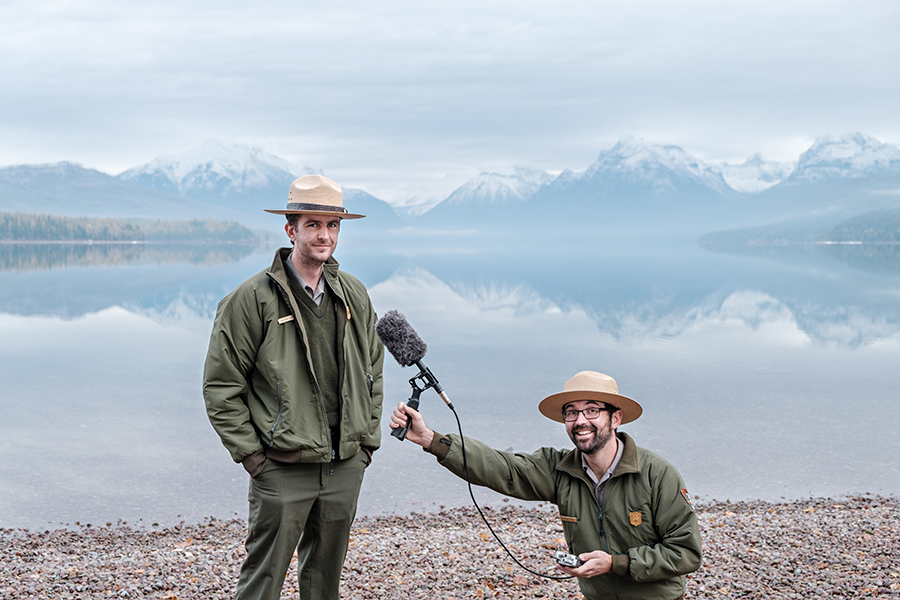
Glacier National Park Debuts New Podcast
With support from nonprofit fundraising partner, park releases first installments of “Headwaters” podcast
Nothing in the digital world quite conveys the scope and grandeur of Glacier National Park like a real-time, in-person visit to the continent’s crown jewel — neither webcams nor Facebook memories nor even a perfectly curated reel of dramatic selfies.
But a new podcast series comes close.
The seven-part series, called “Headwaters,” is all about Glacier National Park and its launch earlier this month delivers an audio storytelling format about a range of relevant and fascinating topics including melting glaciers, world-class geologic features, the region’s deep significance to Indigenous communities, and even the challenges of pit-toilet pumping.
Co-hosted by park rangers Andrew Smith and Michael Faist, the podcast is being produced with help from the Glacier National Park Conservancy, the park’s nonprofit fundraising partner.
“This is exactly the kind of innovative project that is going to drive the future of connectivity between the park and the community,” said Doug Mitchell, executive director of the Glacier National Park Conservancy. “We need to meet people where they are, and podcasts have become an important source of information for people of all ages looking to dig a bit more deeply into issues they care about,” Mitchell continued.
The debut of the park’s inaugural podcast is especially fitting due to the challenges of in-person visits and face-to-face interactions in 2020 due to COVID-19, allowing interpretive park rangers to keep telling Glacier’s remarkable story without putting visitors or themselves at risk.
“It’s always been my job here at Glacier to share the park with others; as an interpretive ranger giving campground talks, or as an education ranger leading snowshoe field trips,” Faist said. “Since we couldn’t do those in-person programs this year the podcast was a perfect project to still be able to connect with visitors.”
“There’s something for everyone in this show, and we hope visitors will join us on this fascinating and enlightening journey,” said Smith. “Headwaters will be a great platform for visitors to receive important and interesting information for years to come.”
“It’s been a treat working with Michael and Andrew on the Headwaters podcast series,” Mitchell added. “They are smart, engaging, and have a great sense of humor. In my view, they strike just the right tone in bringing serious information to the listener in an accessible way.”
The “slick, binge-worthy podcast” is a way to connect with young people, get them to engage, and convince them to become invested supporters and advocates of Glacier National Park, according to the hosts, who described their show as a longform audio storytelling platform highlighting some of the wild and fascinating stories from Glacier’s past, present, and future. It features interviews and field audio from scientists, rangers, local tribal members, “and all sorts of people who have spent time in this area,” according to Smith.
“We’ve spent the summer recording tons of stories with some of the most interesting people who work in the park,” Smith said. “This fall we’ll be editing all of that tape into a full season of wonderful audio content for people to enjoy while they dream about the return of summer and their next visit to Glacier.”
To see photos from the recording process check out the park’s Flickr album:Headwaters Podcast | Flickr.
To listen, visit the park website at go.nps.gov/headwaters and subscribe on Apple Podcasts, or wherever you get your podcasts.